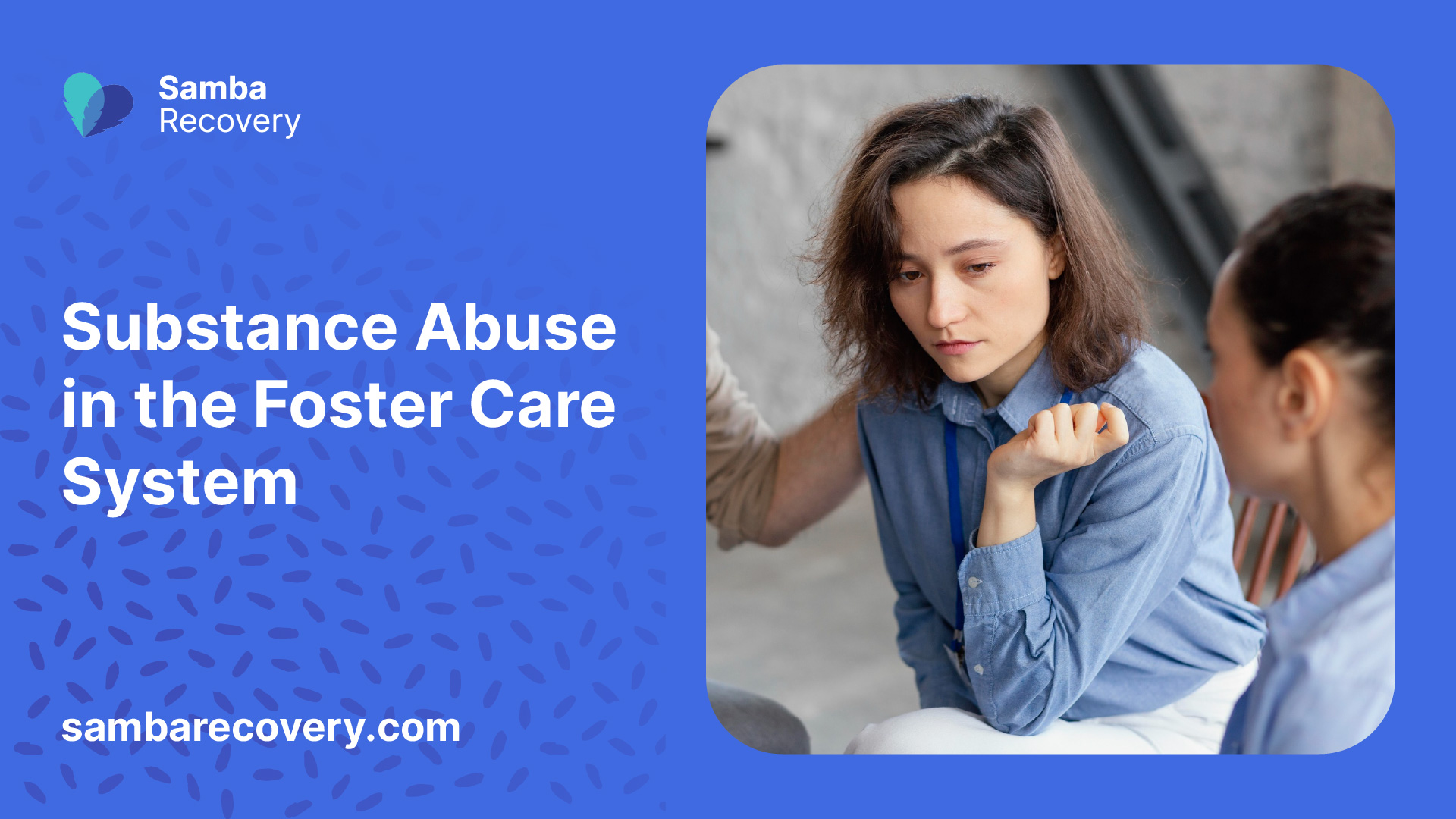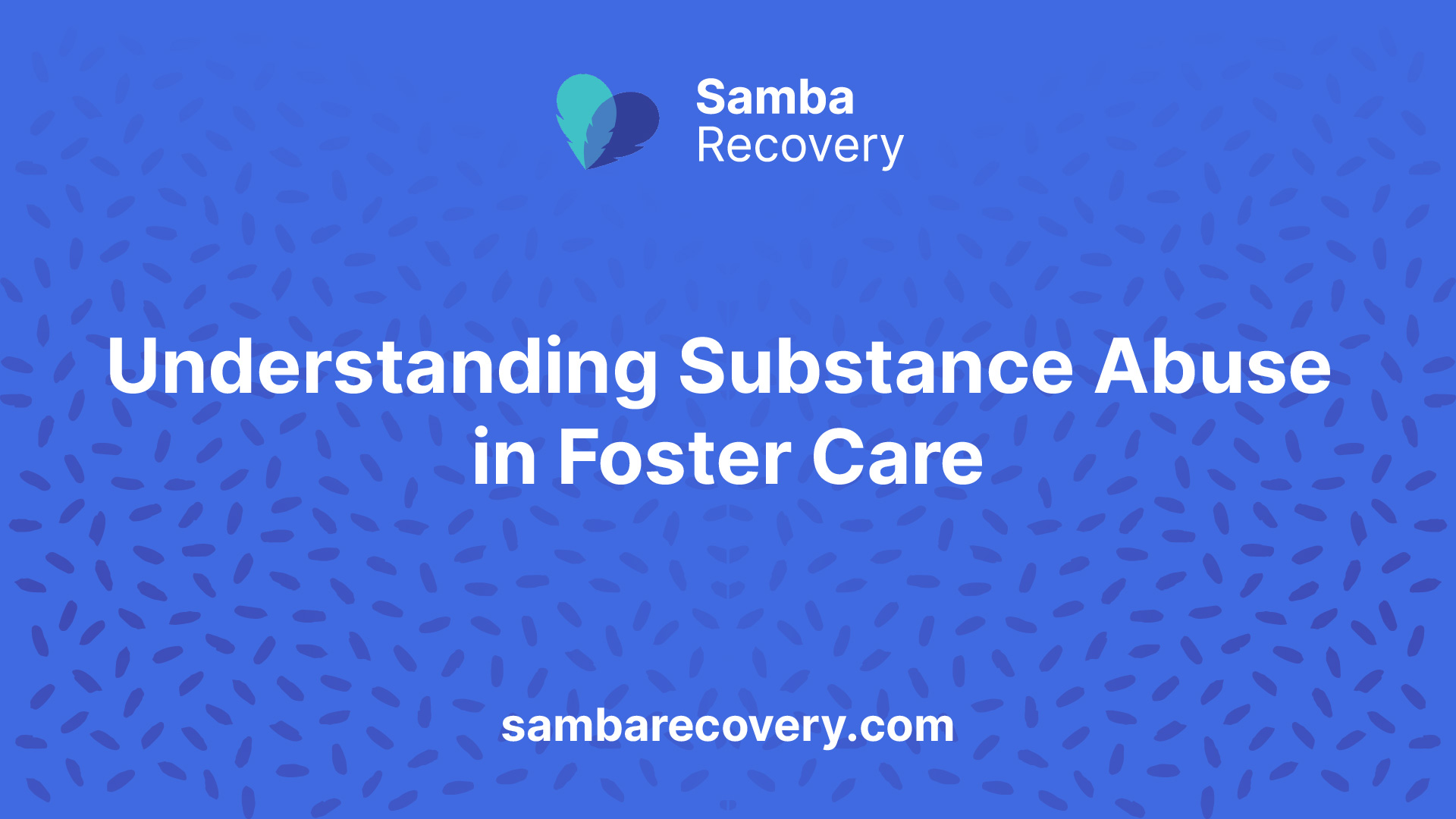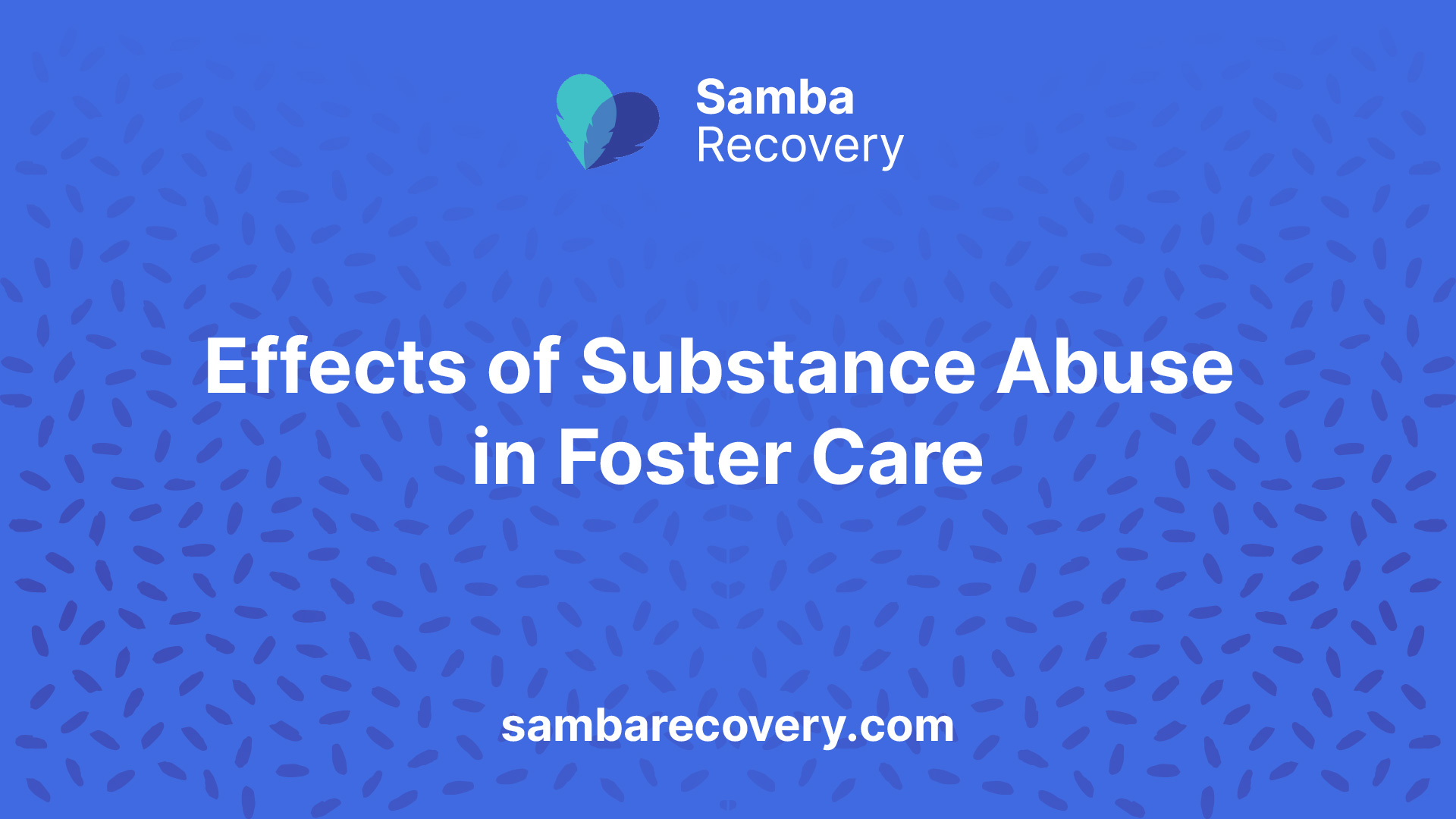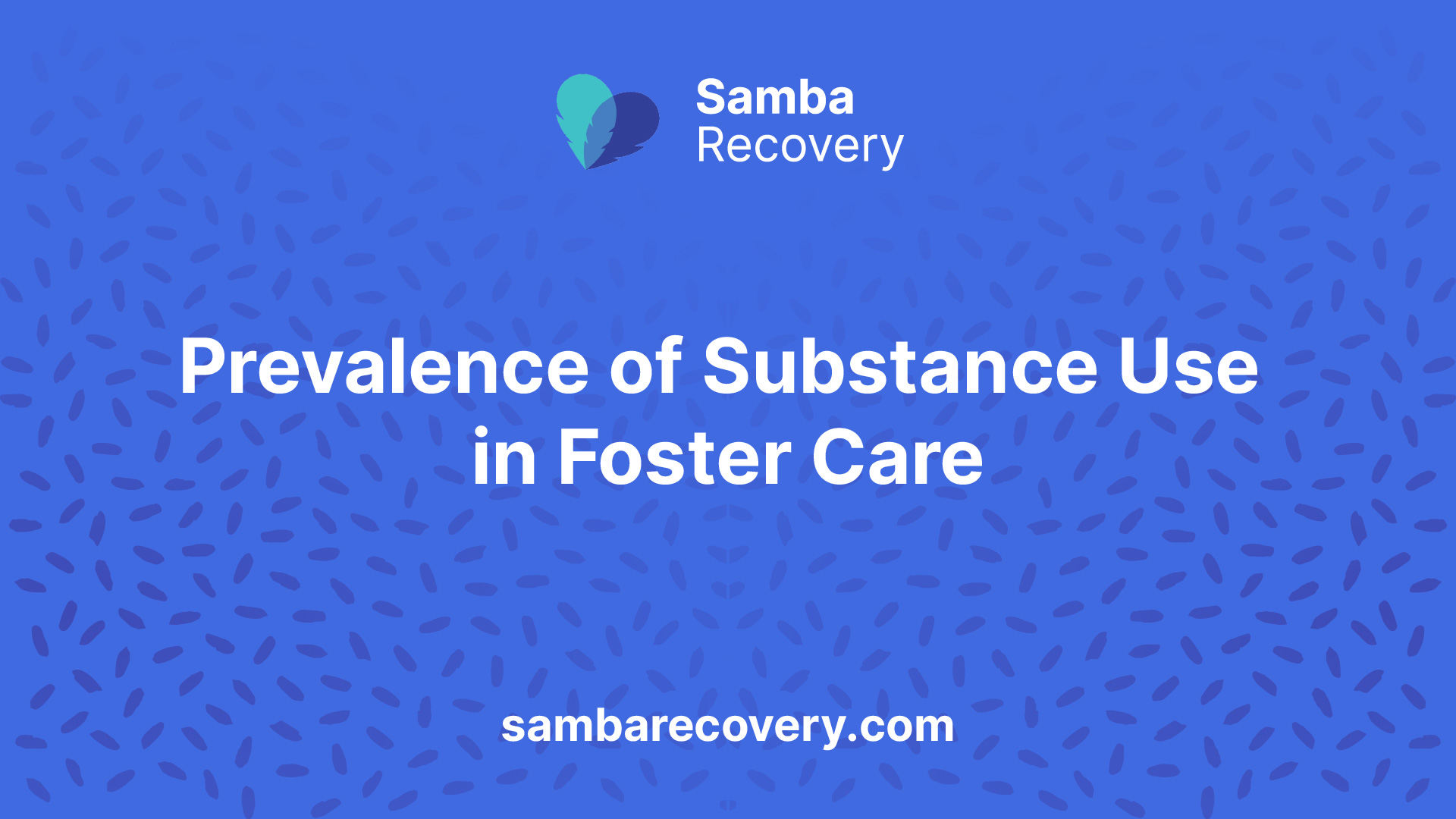
Understanding Substance Abuse in Foster Care
Substance abuse is a significant issue within the foster care system, with children in foster care being particularly vulnerable to its effects. Understanding the factors that contribute to substance abuse in this population is crucial for developing effective interventions and support systems. Two key factors that play a role in substance abuse among foster youth are the impact of trauma and adverse experiences, as well as the role of family history and genetics.

Impact of Trauma and Adverse Experiences
Children in foster care often have a history of trauma and adverse childhood experiences, which can increase their vulnerability to substance abuse. Trauma can lead children to turn to substances as a way to cope with emotional pain or self-medicate, putting them at a higher risk of developing substance use disorders later in life [1]. Difficult relationships with caregivers, frequent placement changes, feelings of instability, isolation, and lack of emotional support contribute to their increased vulnerability to substance abuse [2]. Studies have indicated that almost one-third of foster children experience abuse while in their foster homes, emphasizing the prevalence of trauma within the foster care system [3].
Role of Family History and Genetics
Family history and genetics also play a significant role in the risk of substance abuse among foster youth. Children entering foster care often come from families with a history of substance abuse, and genetic factors can predispose them to addiction, making them more susceptible to substance use disorders [1]. Parental alcohol and drug use are significant contributors to out-of-home placements in the child welfare system, leading to Child Protective Services (CPS) investigations, substantiated maltreatment, and foster care placements. Addressing parental substance abuse is crucial for ensuring the welfare and stability of children in foster care.
Understanding the impact of trauma and adverse experiences, as well as the role of family history and genetics, is essential in comprehending the underlying factors contributing to substance abuse in the foster care system. By addressing these factors, it is possible to develop targeted interventions and support systems to help foster youth overcome substance abuse challenges.
Factors Contributing to Substance Abuse

Substance abuse among individuals in the foster care system can be influenced by various factors, including environmental influences and peer influence/social dynamics.
Environmental Influences
Environmental factors play a significant role in contributing to substance abuse among foster youth. The unstable living situations experienced by many foster children can create a sense of insecurity and uncertainty, which may increase their vulnerability to substance abuse as a coping mechanism. Limited access to supportive resources, such as stable housing, healthcare, and meaningful relationships post-foster care, can further contribute to their risk. The challenges faced by youth in the foster care system, including frequent placement changes and difficulties in establishing stability, can create a fertile ground for substance abuse to develop.
Moreover, exposure to substance abuse within the foster care system itself can influence the behavior of foster youth. Being surrounded by peers who engage in substance use can increase the likelihood of foster youth experimenting with and using substances [1]. The lack of stable support systems and emotional support contributes to feelings of isolation, loneliness, and insecurity, which can further drive foster youth towards substance use as a means of coping.
Peer Influence and Social Dynamics
Peer influence and social dynamics also play a significant role in substance abuse among foster youth. Being surrounded by peers who engage in substance use can normalize such behavior and increase the likelihood of foster youth engaging in substance abuse themselves. The desire to fit in and be accepted by their peers can lead foster youth to experiment with substances, seeking social connection and acceptance [1].
The influence of peers is particularly strong during adolescence, a period when identity formation and social belonging are crucial. Foster youth may face additional challenges in establishing a sense of identity and belonging, making them more susceptible to peer influence and the potential adoption of substance use behaviors as a way to navigate their social environment.
Understanding these contributing factors is essential in addressing substance abuse within the foster care system. By considering the environmental influences and recognizing the impact of peer influence and social dynamics, interventions and support systems can be developed to better meet the needs of foster youth and reduce the risks associated with substance abuse.
Effects of Substance Abuse in Foster Care

Substance abuse in the foster care system can have significant impacts on the well-being and development of children. The exposure to substance abuse can hinder their emotional, cognitive, and social development, shaping their sense of self, relationships, and overall well-being [1]. Understanding the effects of substance abuse is crucial for addressing the needs of these vulnerable individuals.
Impacts on Well-being and Development
Children in foster care who experience substance abuse within their environment face numerous challenges that can impact their overall well-being and development. Some of the key impacts include:
- Emotional well-being: Substance abuse can contribute to emotional instability and negatively affect a child’s mental health. It can exacerbate existing challenges such as difficult relationships with caregivers and frequent placement changes, hindering their development and ability to form healthy relationships.
- Cognitive functioning: Substance abuse can impair cognitive functioning, affecting a child’s ability to learn, concentrate, and retain information. This can lead to academic difficulties and hinder educational progress.
- Social skills development: Children exposed to substance abuse may struggle with social-emotional functioning, potentially leading to challenges in forming and maintaining healthy relationships. They may exhibit externalizing behaviors, which can result in underperformance at school or higher dropout rates compared to their peers.
- Physical health: Substance abuse can have detrimental effects on physical health, including poor nutrition, increased risk of accidents or injuries, and compromised overall well-being. These effects can further exacerbate existing health disparities among children in foster care [1].
Long-term Outcomes and Risks
Research has shown that foster youth affected by substance abuse are at a higher risk of negative long-term outcomes. Some of the long-term risks and consequences associated with substance abuse in foster care include:
- Mental health disorders: Substance abuse can contribute to the development of mental health disorders, such as anxiety, depression, and post-traumatic stress disorder (PTSD). Co-occurring mental health disorders add complexity to the challenges faced by these youth, emphasizing the need for comprehensive support services.
- Academic difficulties: Substance abuse can hinder educational attainment, resulting in lower academic performance, higher dropout rates, and limited future opportunities for success. These challenges can have long-lasting effects on their educational and career trajectories.
- Involvement in the criminal justice system: Substance abuse increases the likelihood of involvement in the criminal justice system. Foster youth affected by substance abuse may face legal issues, further complicating their transition to adulthood and overall well-being [1].
- Higher rates of substance use disorders: Youth in foster care have higher rates of substance use disorders compared to their peers in the general population. Former foster care youth, especially those who have aged out or been discharged from the system, face unique struggles leading to higher rates of substance use disorders.
- Inter-generational cycle: Substance abuse in foster care can perpetuate an inter-generational cycle, with children who have experienced substance abuse being at a higher risk of engaging in similar behaviors in the future. Breaking this cycle requires early intervention and comprehensive support systems.
Understanding the effects of substance abuse in foster care highlights the need for early intervention strategies and comprehensive support systems. By addressing the underlying challenges and providing appropriate interventions, it is possible to mitigate the impact of substance abuse on foster youth and promote their overall well-being and successful transition into adulthood.
Prevalence of Substance Use in Foster Care

Substance abuse among youth in the foster care system is a significant issue that requires attention and intervention. Understanding the prevalence and underlying factors can help inform effective strategies to address this problem.
Statistics and Data
Research indicates that the rates of substance use and substance use disorders are alarmingly high among foster care youth. According to a study, 45% of foster care youth reported using alcohol or illicit drugs within the last six months, and 49% had tried drugs at some point during their lifetime. Additionally, 35% of these youth met criteria for a substance use disorder. These figures highlight the substantial prevalence of substance use disorders among foster care youth, emphasizing the need for effective interventions and support systems.
Marijuana is the most frequently used substance among foster youth, with 46% having tried it at some point in their lives. The mean age for first use of marijuana among this population is 13.1 years. Overall, almost half of the sample (49%) had tried some sort of illicit substance in their lifetime.
Among older adolescents residing in various foster care placements, 34% reported drinking alcohol at least once per month in the past year. Additionally, more than one in five acknowledged tolerance for alcohol, while about the same number (22%) reported drug use in the past year.
Trends and Risk Factors
Several risk factors contribute to the higher prevalence of substance use among foster care youth. Youth in certain living situations, such as independent living and congregate care settings, are more likely to use illicit substances or meet criteria for a substance use disorder. Additionally, youth with a diagnosis of Conduct Disorder (CD) or Post Traumatic Stress Disorder (PTSD) have higher rates of substance use and disorder [6].
It is worth noting that youth who were previously in foster care have higher lifetime use rates than their contemporaries who were never in foster care. This indicates a significant issue of substance abuse within the foster care system [8].
Understanding the prevalence and risk factors associated with substance use in the foster care system is essential for implementing effective prevention and intervention strategies. By addressing the underlying factors and providing comprehensive support, it is possible to improve the well-being and outcomes for youth in foster care who are at risk of substance abuse.
Interventions and Support
Addressing substance abuse in the foster care system requires a comprehensive approach that includes early intervention strategies and the establishment of comprehensive support systems. These interventions and support systems aim to mitigate the impact of substance abuse on foster youth and provide them with the necessary tools for recovery and growth.
Early Intervention Strategies
Early intervention is crucial in identifying and addressing substance abuse in foster youth. By identifying signs of substance abuse early on, interventions can be implemented to prevent further negative consequences. Some key early intervention strategies include:
- Screening and Assessment: Regular screening and assessment of foster youth can help identify any substance abuse issues. Tools such as questionnaires and interviews can be used to gather information about the youth’s substance use behaviors and potential underlying factors.
- Psychoeducation: Providing foster youth with education about the risks and consequences of substance abuse can help increase their awareness and understanding of the topic. Psychoeducation can also include information about healthy coping mechanisms and alternative ways to manage stress and emotions.
- Therapeutic Interventions: Individual and group therapy sessions can be beneficial for foster youth struggling with substance abuse. Therapeutic interventions provide a safe space for youth to address underlying issues, develop coping skills, and receive support from trained professionals.
- Family Involvement: Involving the foster youth’s biological or foster family in the intervention process is essential. Family therapy and support can help address family dynamics, improve communication, and provide a stable and supportive environment for the youth.
Comprehensive Support Systems
Comprehensive support systems play a vital role in addressing substance abuse in foster care. These systems are designed to provide ongoing support, treatment, and resources to foster youth affected by substance abuse. Key components of comprehensive support systems include:
- Case Management: Foster care social workers and case managers play a crucial role in coordinating and monitoring the services and support received by foster youth. They help connect youth to appropriate treatment programs, mental health services, and other necessary resources.
- Family Treatment Drug Courts (FTDCs): FTDCs are specialized courts that focus on addressing substance abuse issues within the foster care system. They provide comprehensive support to families involved in the child welfare system, offering substance abuse treatment, parenting programs, and other necessary services.
- Collaboration and Coordination: Collaboration among various professionals involved in the foster care system, such as social workers, therapists, educators, and healthcare providers, is essential for providing holistic support to foster youth. Coordinated efforts ensure that all aspects of the youth’s well-being are addressed.
- Aftercare and Transition Support: Transitioning out of the foster care system can be a challenging time for youth affected by substance abuse. Comprehensive support systems should include aftercare programs and resources to assist youth in maintaining their recovery and successfully transitioning to independent living.
By implementing early intervention strategies and establishing comprehensive support systems, the foster care system can better address substance abuse issues among foster youth. These interventions and support systems aim to provide the necessary resources and guidance for foster youth to overcome substance abuse challenges and thrive in their personal and academic lives.
Addressing Substance Abuse Challenges
In order to effectively address the challenges of substance abuse in the foster care system, it is crucial to implement integrated treatment approaches and recognize the important role of foster care social workers.
Integrated Treatment Approaches
Integrated treatment approaches have shown positive outcomes in addressing substance abuse in foster care. These approaches aim to provide comprehensive support, improve treatment outcomes, and increase the likelihood of successful recovery for children and families involved in the foster care system.
Family-based interventions are an essential component of integrated treatment approaches. They focus on involving the entire family in the recovery process, addressing the underlying issues contributing to substance abuse, and promoting healthy family dynamics. By working with both the child in foster care and their biological or foster family, these interventions aim to strengthen relationships, improve communication, and provide the necessary support for successful recovery.
Another integrated approach is the use of Family Treatment Drug Courts (FTDCs). These specialized courts provide a collaborative and problem-solving approach by integrating child welfare and substance abuse treatment services. FTDCs aim to improve outcomes for families affected by substance abuse, promote child safety and well-being, and facilitate timely permanency decisions.
By implementing integrated treatment approaches, substance abuse in the foster care system can be addressed more effectively, leading to improved outcomes for children and families.
Role of Foster Care Social Workers
Foster care social workers play a crucial role in addressing substance abuse challenges within the foster care system. These dedicated professionals have the responsibility of placing foster children in permanent homes and ensuring their safety and well-being while in the foster care system.
Foster care social workers work closely with families to develop permanency plans that outline a path toward giving children permanent, safe living situations. These plans may require natural caregivers to participate in programs that help resolve drug and alcohol misuse and family violence. Foster care social workers also support families in participating in substance use testing and therapy to address the root causes of substance abuse and work towards family reunification or adoption.
Additionally, foster care social workers are responsible for finding stable and safe environments for children placed under their care. They conduct interviews and home studies to assess the suitability of prospective foster parents, ensuring that their homes meet safety, health, and state requirements. Foster care social workers also provide ongoing support to foster families, helping them provide safe and therapeutic environments for the children in their care.
By recognizing the crucial role of foster care social workers and providing them with the necessary resources and support, the foster care system can better address substance abuse challenges and provide the best possible care for children and families in need.
In conclusion, addressing substance abuse challenges in the foster care system requires the implementation of integrated treatment approaches and the recognition of the important role played by foster care social workers. By utilizing these approaches and supporting social workers in their vital work, we can work towards improving outcomes for children and families affected by substance abuse in the foster care system.
References
[1]: https://www.elev8centers.com/blog/substance-abuse-in-foster-care
[2]: https://www.northstarbehavioralhealthmn.com/resources/substance-abuse-in-foster-care
[3]: https://www.avenuesrecovery.com/blog/substance-abuse-in-foster-care
[4]: https://www.aristarecovery.com/blog/substance-abuse-in-foster-care
[5]: https://onlinesocialwork.vcu.edu/blog/foster-care-social-worker/
[6]: https://www.ncbi.nlm.nih.gov/pmc/articles/PMC2633867/
[7]: https://www.ncbi.nlm.nih.gov/pmc/articles/PMC3596821/
[8]: https://www.avenuesrecovery.com/blog/substance-abuse-in-foster-care/






